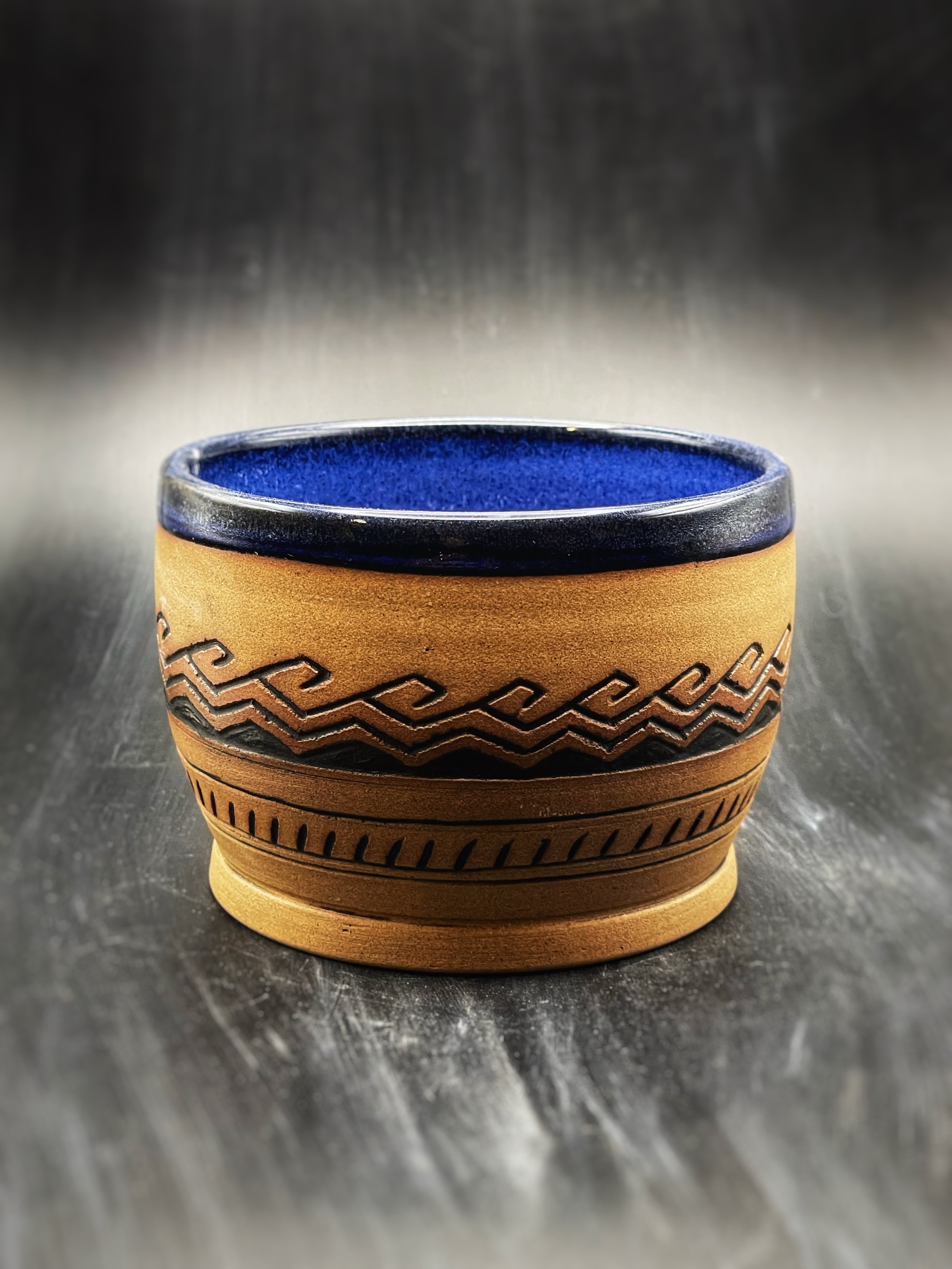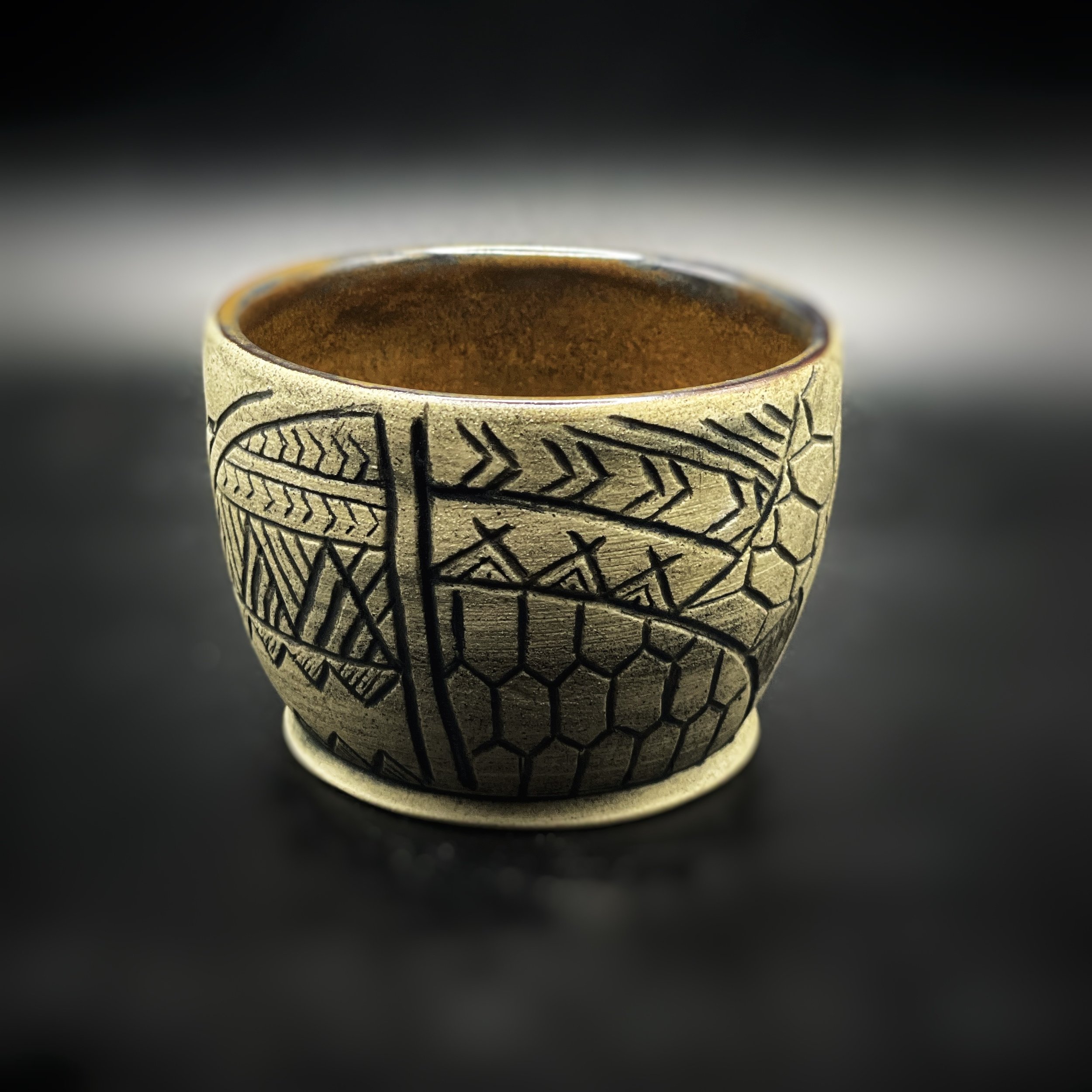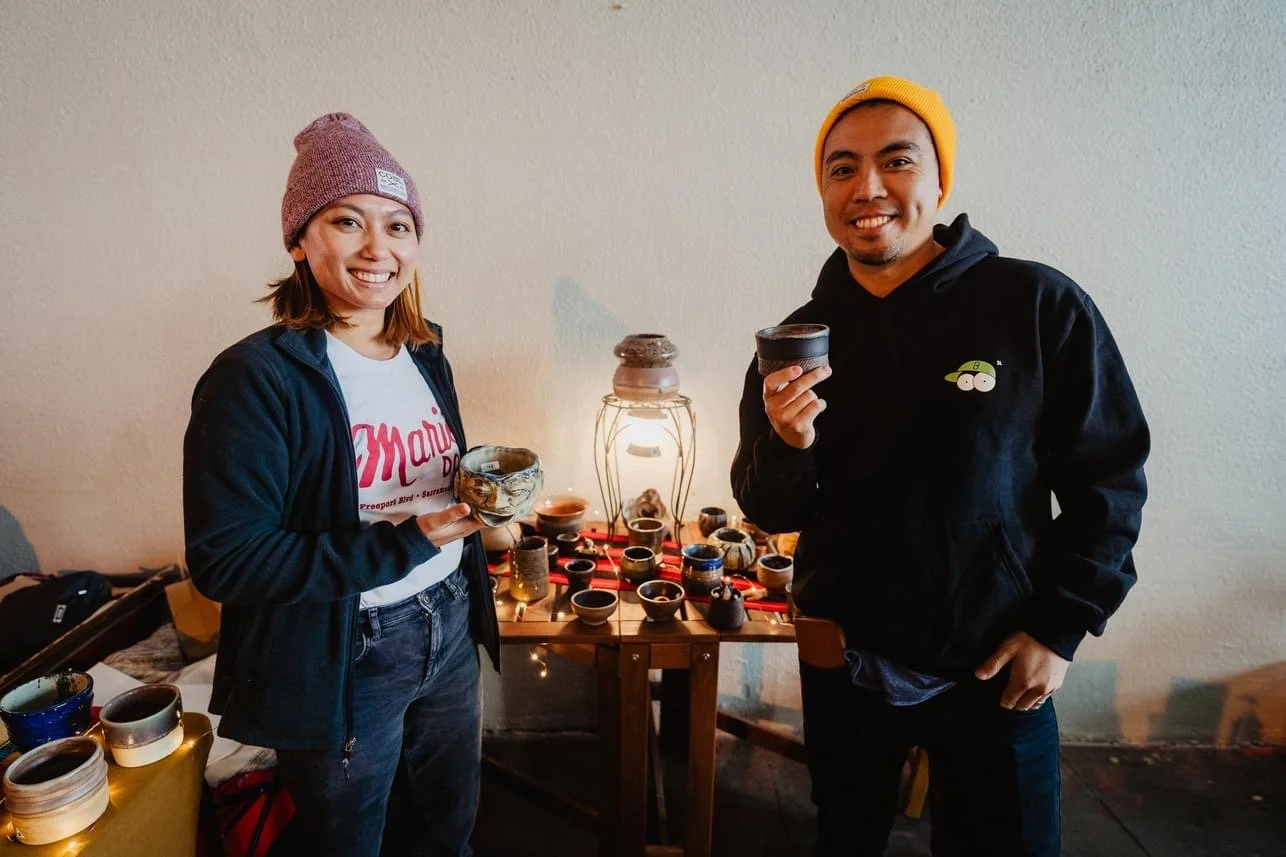Nurse finds healing, connection, and a passion for pottery amidst COVID-19 challenges
By Royvi Hernandez January 6, 2024
Michael Vicente never intended to become an artist. As a registered nurse responsible for developing the COVID-19 Unit at Mercy Hospital in Sacramento, finding moments for rest was difficult.
“There were a lot of deaths and trauma during the pandemic. It was a very stressful time, and getting time off to relax was hard,” Vicente said.
One day, he decided to purchase some clay. Little did Vicente know that this impromptu decision to immerse himself in the world of pottery would bring much-needed solace and lead him on a path of creative fulfillment. Seeing his talent, Vicente’s coworkers gifted him a ceramic wheel for his birthday, and the rest is history.
“I found ceramics to be a healing outlet for me that I never knew I needed. After discovering this, I wanted to spread that healing property to others by sharing my art, so I bought more clay, and it grew from there,” Vicente said.
Over the last few years, Vicente has honed his artistic skills, venturing into diverse mediums such as ceramic sculpture, wheel throwing, and drawing. His signature work, rich in earth tones and marbled clay, includes dinnerware and vases with carefully carved faces and patterns unique to pre-colonial Philippines as well as “minions,” sculpted figurines of various animals and creatures.
As the son of Filipino immigrants who moved from Nueva Ecija, Philippines, to San Francisco, California, in the 1970s, Vicente pays homage to his ancestral roots in his creations.
“I’m still learning about my culture to this day. I’ve only been to the Philippines once, but I’m planning to go back soon,” he said. “I want people to be able to look at my pieces and notice a Filipino touch like the colors and texture.”
In April 2022, Vicente founded Studio Damili. The name “damili” stems from an Ilocano word for pottery or creations molded from clay. The small collective began as a collaboration with his partner Avery Hulog-Vicente and brother Bryan Vicente. Together, the family of artists shares their creative talents with the world.
“My partner is a writer and does digital art. We sell her poems as well. My brother is a photographer, and he’s also been integrating his art. He now has his own studio called Studio Akali,” Vicente said.
(Left to right) Avery Hulog-Vicente and Michael Vicente of Studio Damili, a collective founded in April 2022. Photo courtesy: Michael Vicente
Working alongside loved ones has allowed Vicente to see different perspectives and understand that the creative process isn’t always linear. He’s constantly evolving his art while maintaining his unique style. Vicente plans to expand his pottery knowledge to create other functional ware, including lamp lanterns and sculptures.
Sean Delizo, a close friend of Vicente, has seen Studio Damili evolve through time from a garage to a studio where Vicente can create “magic.”
“In Sacramento, it gets really hot during the summertime, and there’s no AC in his garage, so the fact that he goes in there on hot days is very magical to me. It takes a lot of dedication and mental fortitude,” Delizo said.
Delizo has purchased several pieces of personalized pottery from Vicente and has seen how others in the area love Vicente’s work.
“One of my favorite pieces was a commissioned piece he did for a friend based off A Tribe Called Quest album cover, and to see that same face recreated and come to life was amazing,” Delizo said. “He brings a lot of life into his pottery through the faces, and that’s very special.”
Delizo believes that Vicente’s incorporation of Filipino culture into his creations is crucial for growing Filipino art culture in the Sacramento area.
“I know Michael is working on projects to teach other people within the community how to pot and bring more Filipinos into ceramics,” he said.
Pottery-making has become a profound and personal journey for Vicente, one that has allowed him to reconnect with his culture. He began to delve deeper into Philippine history to create meaningful designs with more intention behind them, strengthening his connection to his roots and homeland.
“Being a first-born American, it was difficult to fit in. I wasn’t ‘American’ enough to fit in here or ‘Filipino’ enough to fit in there,” Vicente said. “I’m still actively learning, with so much more to discover. I want to include others on my journey through my art.”






